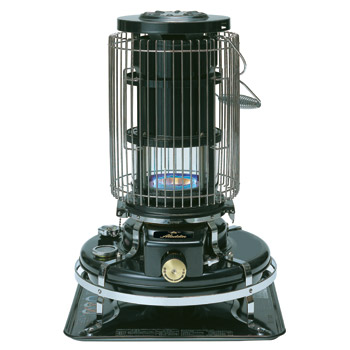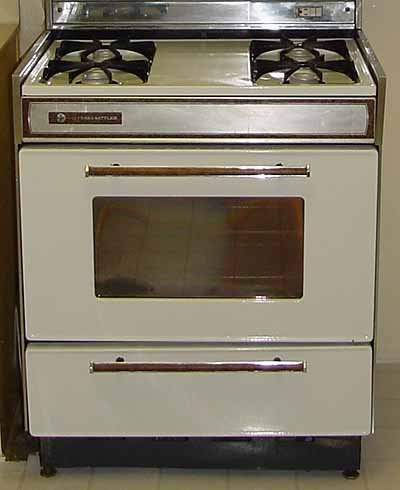I’ve found another great set of equalities for my never-ending quest to debunk all mistranslations of 外来語 and 和製英語.
ストーヴ = 
stove = 
I’m sure the usage of ストーヴ overlaps slightly with the English stove, as is evident from a Google Images search, but for the most part ストーヴ refers to a Japanese-style kerosene heater. Anyone who has ever taught English on JET, especially out in the countryside, is probably well familiar with these. I have great memories of them. In addition to heating the room, on top there is always a kettle boiling or a big tub of water being warmed – like water usage in toilets, another great example of Japanese efficiency. In the winter many of my students warmed up their lunch milk in the tub of water. Be warned: doing this will make you extremely sleepy and may even affect your post-lunch teaching ability.
Stoves as Americans think of them, on the other hand, are few and far between in Japan. The ovens underneath take up space that isn’t available in Japan, and there’s also less of a tradition of bread-making and other baking. In most cases a smaller microwave oven will do the trick. Gas or electric ranges are common and generally referred to as レンジ. Additionally, there is a small fish-sized drawer which noobs can use to grill eggplants and toast. The area where the oven would be is generally storage space where Japanese people keep all their cleaning supplies and 2D girlfriends.

Facebook friend Jon says: Interesting how the usage of a word changes. Stove derives from the old English stofa, meaning living room. It was used in English from around the 15th century to describe a heated room, and a couple of hundred years later the word started to be used to describe the enclosed fire used to heat the room, and also heat up food.
Cool point! It also reminds me of something I forgot to mention – the English word stove is still used to mean heater judging from Google Images. So I guess ストーヴ = stove sometimes.
Facebook friend Yngve adds: “Stofa” is actually Old Norse: http://en.wikipedia.org/wiki/Old_Norse_language
Today the word reads “stove”(pronounced ストーヴェ) or “stue” depending on where in Norway you come from. It still means “living room”. The word for “a stove” is “ovn”, as in English “oven” or Japanese “オーブン”.
Many Old Norse words were adopted into Old English during the Viking age, when Scandinavian language still had some influence in the world. Those were the days … :-)
Very cool.
In the US stove is very often a heater. I guess older country homes are where you would find them. The word most certainly has two distinct meanings. The problem is Japanese only have the one meaning for the word stove. So many words are like that… renew, bike, and sand are a few.
bob smith – Older homes much farther north than where I grew up, heh. I guess that’s why I associate them only with cooking.
Also, facebook friend Dan says: I am torn. Loved reading everything above, but now feel as though my stove-related knowledge has always been inadequate. Gonna go study some stove facts and be back.
To which I reply, I just want to know if a viking ever said “Please remove your bloody garments before sitting on the sofa in my stofa.”
Haha, stove is nothing! Try wrapping your mind around スマート or 時間にルーズ.
* meaning “skinny” and “not prompt with time” repsectively.